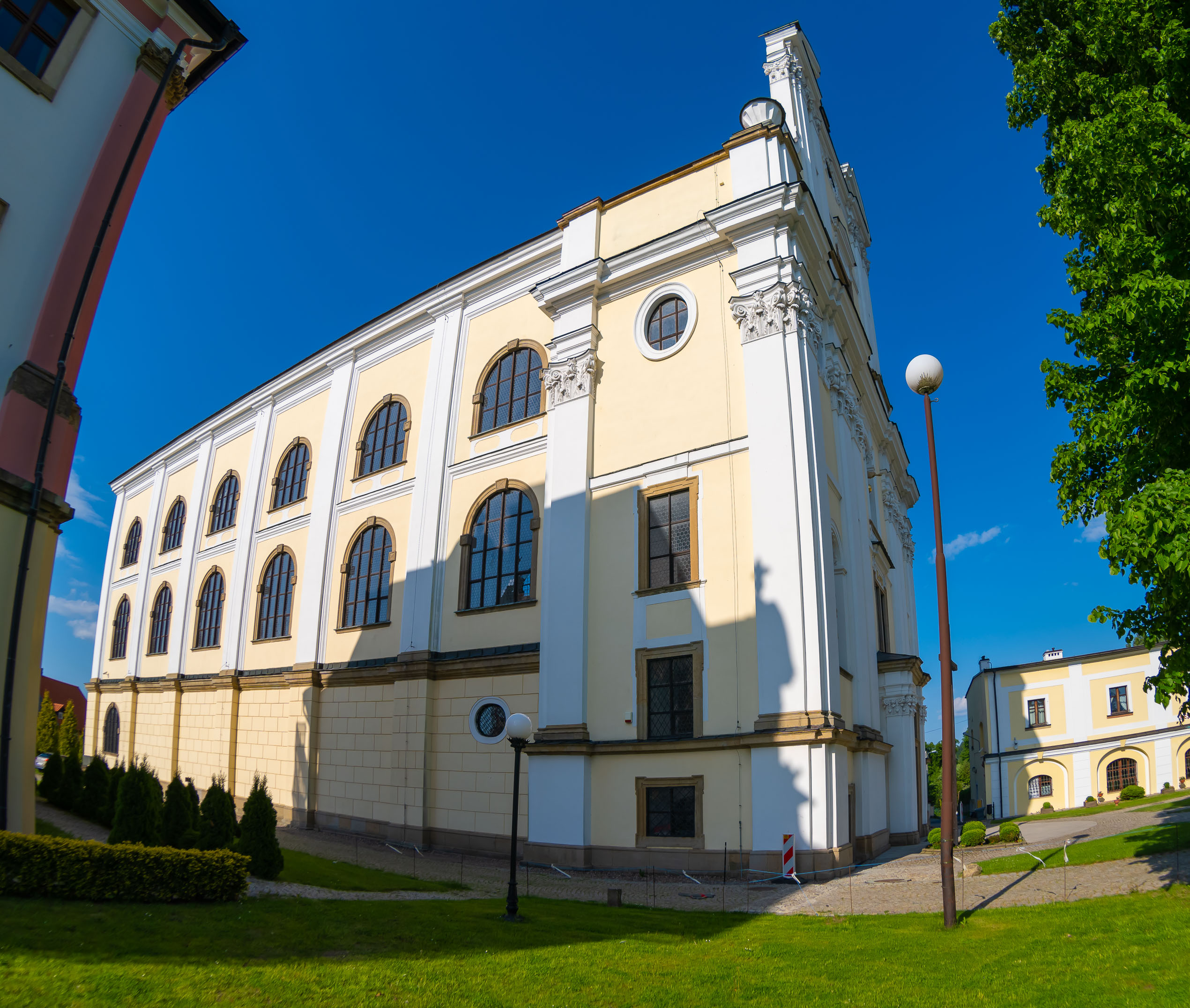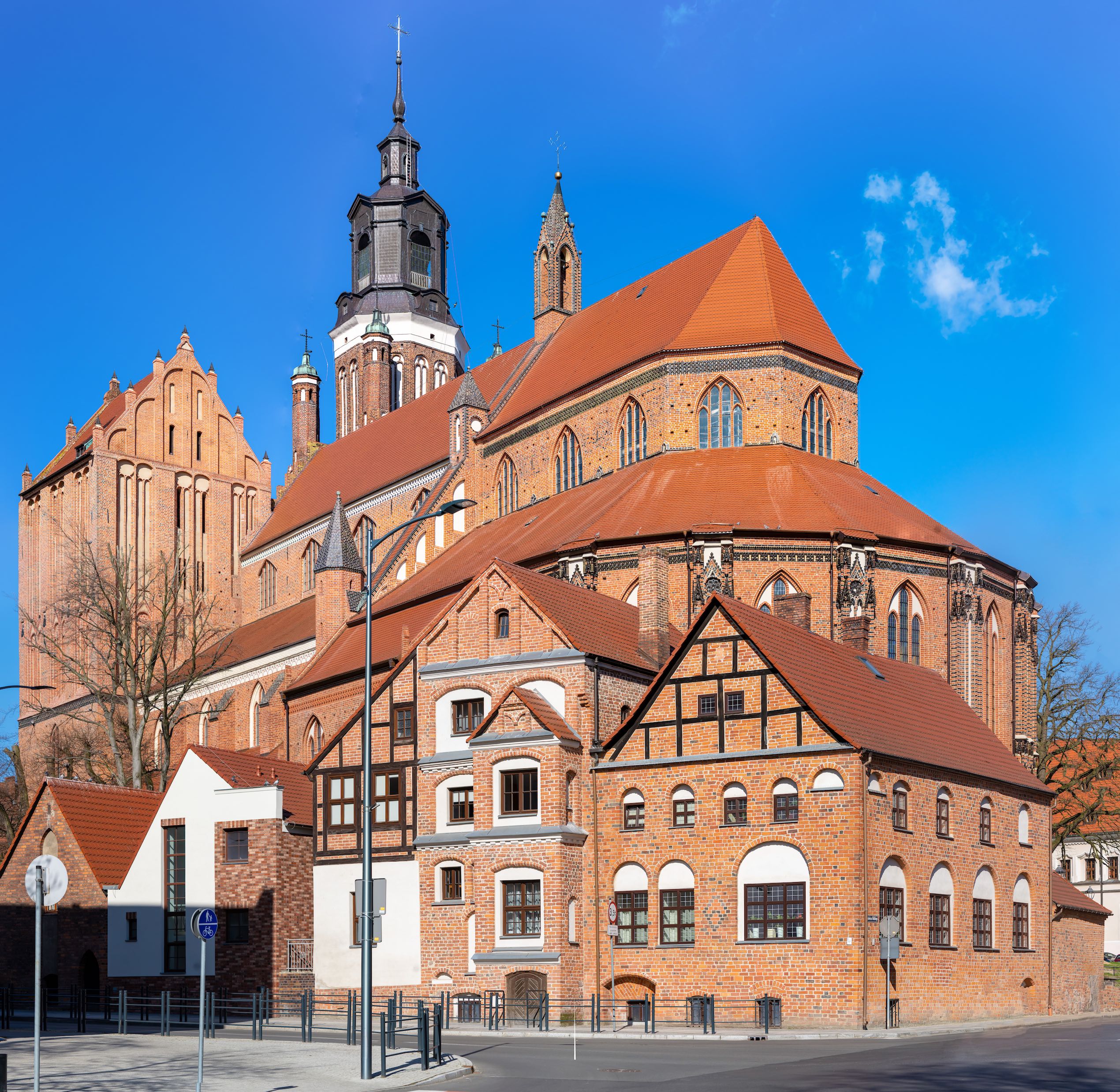Assumption of the Blessed Virgin Mary Church
The complex of the former Augustinian monastery in Zagan was declared a historical monument in 2011. Established in the 13th century, it is the most important element of the historic urban establishment, standing out in the panorama of the old town as a separate enclave. Artistically, the complex of monastery buildings, finally formed in the 18th century, presents an excellent combination of Gothic and Baroque architecture. Its monumental character, exceptional spatiality of internal divisions and interesting forms of stucco and paint decor distinguish it from other Silesian realizations.
The most valuable building is the Church of the Assumption of the Blessed Virgin Mary, whose external architecture has essentially retained its Gothic character. Originally there was a church associated with a market settlement. After the city’s incorporation, a parish was erected in its place, most likely a three-nave basilica, which was given to the Augustinians in 1284 along with the function of a rectory. After 1333, when the abbey was guaranteed material support from the local government, work was undertaken to expand the temple, first erecting a Gothic chancel, and in the second half of the 14th century a three-nave hall with a tower. After being destroyed by fires in 1472 and 1486, the church was rebuilt, extending the body to the west, raising the nave and covering the interiors, including the chancel with vaults. In 1602 the western facade was enriched with an added cloister with a loggia. The reconstruction of the church after the fire in 1730 in the external architecture was marked by the transformation of windows and roofs over the body and tower, and in the interior by Baroque decoration.
The interior of the church is a three-nave hall with pointed arches supported by twelve octagonal pillars. The vaults have cruciform, stellar and lattice constructions. The northern nave has a shallow gallery with an openwork balustrade. The nave at the top is decorated with illusionist-painted windows along with sculptures of angels sitting on the sills. The church contains stalls from 1695 and the Holy Trinity altar from the 16th century. The church also houses the Gothic sarcophagus of the Duke of Glogow and Zagan Henry IV the Faithful.
Photographs
Gigapanoramas
Gigapixels
3D models
)
)
)
)
)
)
)
)
)